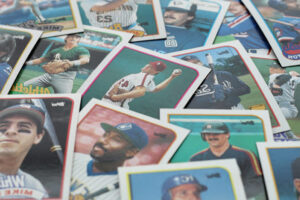Over the past decade, card grading has drastically affected sports card collectors. Although there have been occasional setbacks, a more standardized structure has led to a more consistent and fluid card market. Most amateur collectors believe that they must send in all of their cards for grading to get the best value for their cards. However, that’s not always true.
Should I Grade My Own Cards?
Collectors should undoubtedly look into self-grading their own cards. The more you learn about how grading works, the better you can decide if you want to spend the money on card grading.
The more collectors become involved with card grading, the more acceptable it becomes to buy and sell ungraded (or raw) cards.
If you want to expand your knowledge of card grading, understanding the various factors of how a card is graded can be important in assessing your own cards.
Areas to Watch:
Here are parts you need to watch for grading:
1. Surface
As for the surface, we inspect both the front and back of the card for signs of scratches, wear, marks, stains, dents, or wrinkles. Any type of surface wear will result in a reduction in the overall grade of the card.
The reduction in value depends on the number of defects and their severity. All other things being equal, a card with a minor surface scar would be rated better than a card with a large surface stain.
2. Centering
Each grading company has a different method of accepting off-centering for every numerical assessment. Even a PSA-10 card, for example, maybe somewhat off-center. Yet, any card with centering problems beyond the typical range will receive a lower grade. According to PSA rules, this means either an OC (off-center) qualification or a drop in the overall score (grade).
3. Borders
The borders of a card can help you determine the overall grade. Look for visible chips (easier to spot on cards with non-white border lines), dents (perhaps from a rubber band), or general age-related wear. Any deviation from a typical border will result in a grade reduction.
4. Corners
If we assume that a card has four sharp corners, to begin with, anything beyond that will result in devaluation. The degree of damage to the corners determines how much a card should drop in grade. Looking at numerous graded versions of a card can help you see what different numerical grades should look like.
Bottom Line
So there you have it. These were some tips we wanted to share with you to help you evaluate your cards. Of course, you can also send your cards to companies like PSA or SGC to have them graded, but that costs a lot of money.
Remember, while it is essential to have your cards evaluated, it is even more important to maintain them and keep them in optimal condition to maximize their sale value. At American Legends, we can help you with all of these issues. How? Get in touch today.


